Text
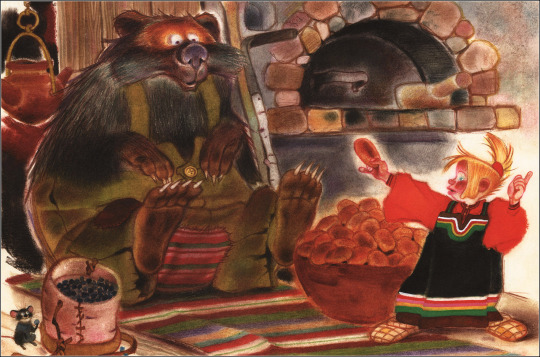
Gennady Novozhilov's illustration for Russian tale "Masha and the Bear".
#gennady novozhilov#геннадий новожилов#masha and the bear#маша и медведь#russian#slavic#russian tales#русские сказки#tale illustration#russian illustration#illustration#bear
103 notes
·
View notes
Text

Vladimir Pertsov's illustration for russian bylina "Sadko".
#vladimir pertsov#владимир перцов#russian#slavic#sadko#садко#bylina#былина#russian tales#русские сказки#russian illustration#tale illustration#illustration
97 notes
·
View notes
Text

Gennady Novozhilov's illustration for russian tale "The Turnip".
#gennady novozhilov#геннадий новожилов#репка#the turnip#russian tales#русские сказки#russian#slavic#russian illustration#tale illustration#illustration#cat#dog
56 notes
·
View notes
Text
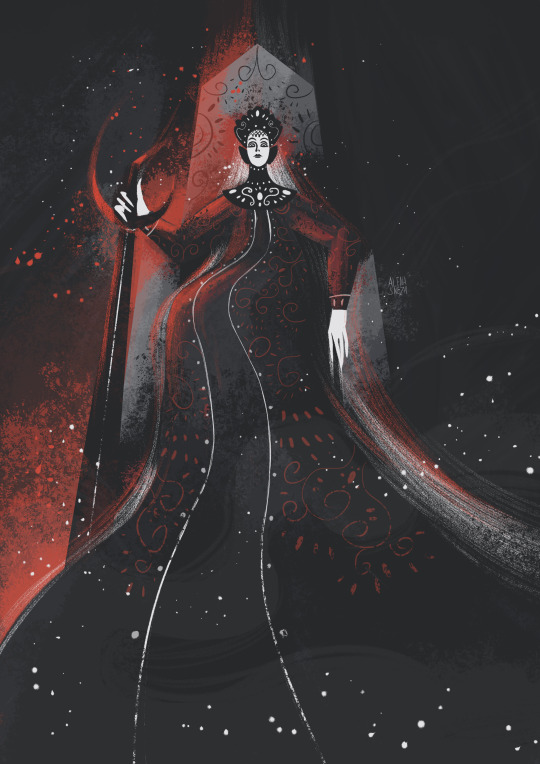
Alyona Solomatina's illustration for russian tale "Marya Morevna".
#alyona solomatina#алена соломатина#marya morevna#марья моревна#russian#slavic#russian tales#русские сказки#russian illustration#russian art#illustration#tale illustration
314 notes
·
View notes
Text

Tamara Shevaryova's illustration for russian tale "Marya Morevna".
Koshchei the Deathless is an archetypal male antagonist in Russian folklore.
The most common feature of tales involving Koschei is a spell which prevents him from being killed. He hides "his death" inside nested objects to protect it. For example, his death may be hidden in a needle that is hidden inside an egg, the egg is in a duck, the duck is in a hare, the hare is in a chest, the chest is buried or chained up on a far island. Usually he takes the role of a malevolent rival figure, who competes for (or entraps) a male hero's love interest.
The origin of the tales is unknown. The archetype may contain elements derived from the 12th-century pagan Cuman-Kipchak (Polovtsian) leader Khan Konchak, who is recorded in The Tale of Igor's Campaign; over time a balanced view of the non-Christian Cuman Khan may have been distorted or caricatured by Christian Slavic writers.
#tamara shevaryova#тамара шеварева#marya morevna#марья моревна#koschei the deathless#кощей бессмертный#russian#slavic#russian tales#русские сказки#russian illustration#illustration#tale illustration
423 notes
·
View notes
Text

Gennady Novozhilov's illustration for russian tale "The Fox and the Cat".
#gennady novozhilov#геннадий новожилов#кот и лиса#the cat and the fox#russian#slavic#russian tales#русские сказки#russian illustration#illustration#tale illustration#cat#fox#ber#wolf#rabbit
195 notes
·
View notes
Text
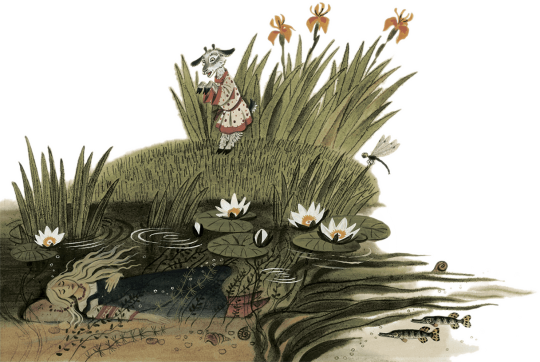
Natalya Trepenok's illustration for russian tale "Sister Alyonushka and Brother Ivanushka".
#natalya trepenok#наталья трепенок#russian#slavic#russian tales#русские сказки#russian illustration#tale illustration#illustration
193 notes
·
View notes
Text

Palekh painting on a small box with illustration of "Morozko" tale.
Palekh miniature is a Russian folk handicraft of a miniature painting, which is done with tempera paints on varnished articles made of papier-mâché (including the creation of small boxes, cigarette cases, and powder cases).
Morozko (Grandfather Frost) is a spirit of frost or sometimes a wizard of winter. Since the 19th century this character has changed, and now he is a symbol of the New Year holiday. Morozko is similar to Santa Claus in his modern role in russian culture.
152 notes
·
View notes
Text

Boris Zvorykin's illustration for russian tale "The Feather of Finist the Falcon".
#boris zvorykin#борис зворыкин#finist the falcon#финист ясный сокол#russian#slavic#russian tales#russian illustration#русские сказки#tale illustration#illustration
112 notes
·
View notes
Text

Ivan Tsygankov's illustration for russian tale "Baba Yaga".
#ivan tsygankov#иван цыганков#baba yaga#баба яга#russian#slavic#russian tales#russian art#russian illustration#русские сказки#tale illustration#illustration#cat
101 notes
·
View notes
Text

Natalya Trepenok's illustration for russian tale "Sister Alyonushka and Brother Ivanushka".
#natalya trepenok#наталья трепенок#russian#slavic#russian tales#russian art#russian illustration#русские сказки#tale illustration#illustration#sister alyonushka and brother ivanushka
221 notes
·
View notes
Text

Viktor Britvin's illustration for "The tale of Tsar Saltan" in verse by Alexander Pushkin.
#viktor britvin#виктор бритвин#alexander pushkin#александр пушкин#сказка о царе салтане#tale of tsar saltan#russian#slavic#russian tales#русские сказки#russian art#russian illustration#tale illustration#illustration
185 notes
·
View notes
Text

Oleg Korovin's illustration for the book of russian fairy tales "The Malachite Casket" by Pavel Bazhov.
#oleg korovin#олег коровин#pavel bazhov#павел бажов#russian#slavic#russian tales#russian art#russian illustration#русские сказки#tale illustration#illustration#bazhov's tales#сказки бажова
95 notes
·
View notes
Text
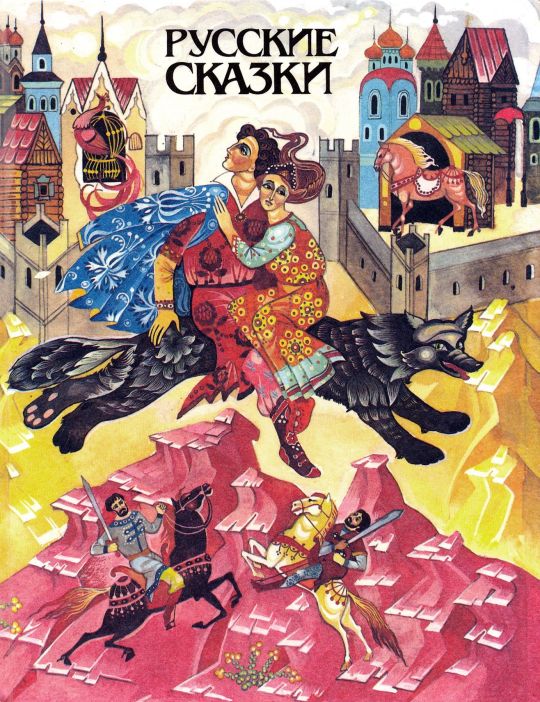
M. Tesarzhikova illustration for the cover of the book of russian fairy tales.
#m. tesarzhikova#м. тесаржикова#russian#slavic#russian tales#русские сказки#russian art#russian illustration#slavic tales#tale illustration#illustration
87 notes
·
View notes
Text

Pavel Ponomarenko's illustration for russian tale "The Frog Tsarevna".
#pavel ponomarenko#павел пономаренко#russian#slavic#russian tales#russian art#russian illustration#русские сказки#tale illustration#illustration#the frog tsarevna#царевна лягушка
50 notes
·
View notes
Text
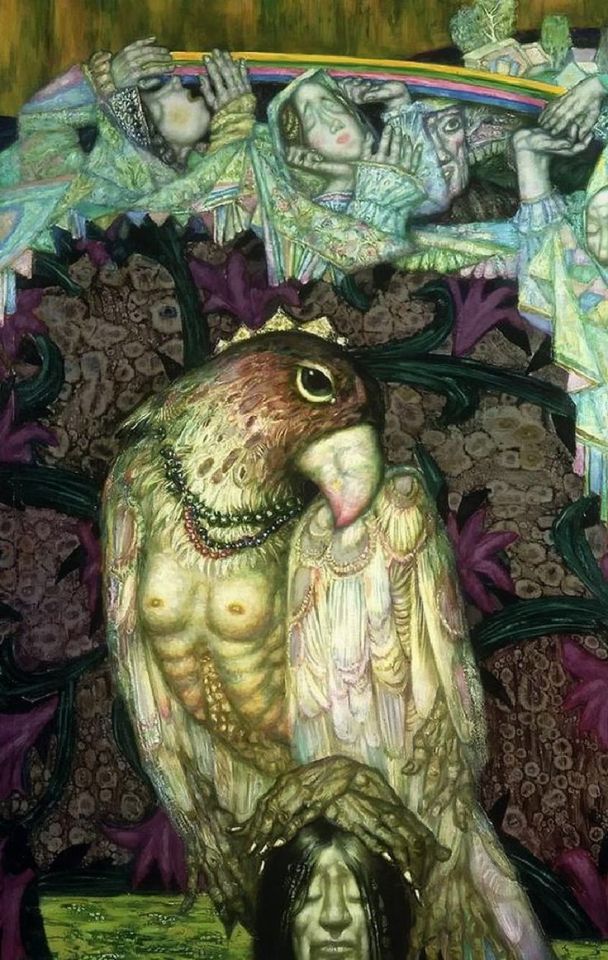
Oleg Gurenkov’s painting “The Rainbow”.
#oleg gurenkov#олег гуренков#russian#russian art#russian modern art#russian folklore#russian tales#русские сказки#slavic
61 notes
·
View notes
Text
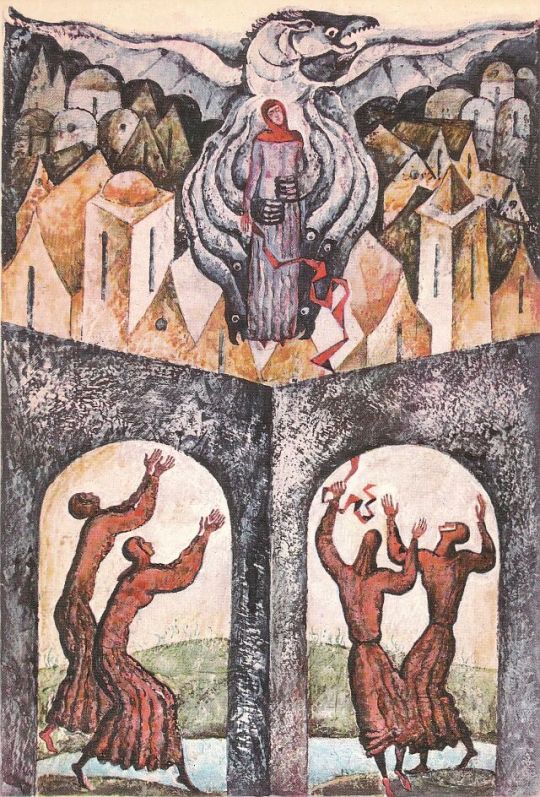
Nikolai Vorobyov's illustration for russian epic poem (bylina) "Dobrynya and the Serpent".
#nikolai vorobyov#николай воробьев#russian#slavic#russian epic poem#bylina#былина#russian tales#russian folklore#русские сказки#russian illustration#tale illustration#illustration#zmei#Змей
217 notes
·
View notes